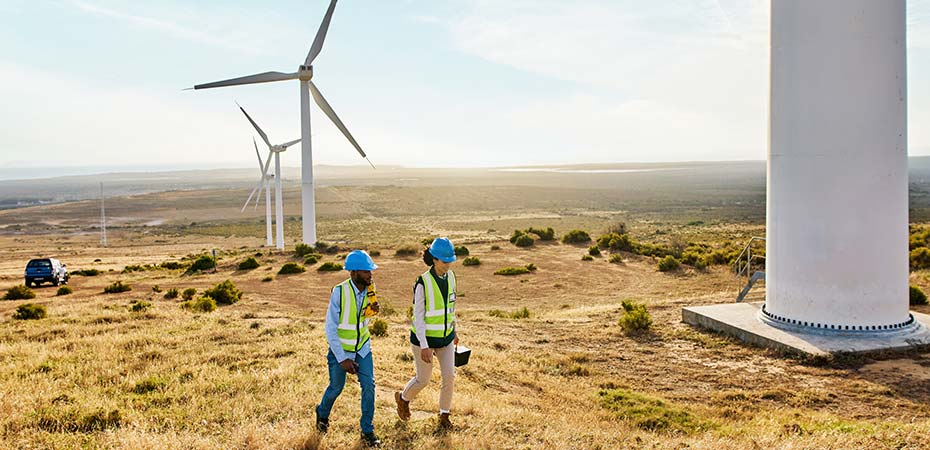Committing to sustainable energy development can be achieved alongside socio-economic development
First stated by President William Ruto in his welcome address on the opening morning of the conference and then reiterated throughout, it is clear that leaders on the African continent see sustainable energy development and socio-economic development as not only compatible, but inextricably linked as crucial factors in the present and future of their nations and continent as a whole.
Given Africa’s endowment of both clean energy sources and the minerals required to catalyse the development of sustainable energy worldwide, in addition to its vulnerability to the impacts of climate change, Africa’s leaders believe they can, and must, position themselves as global leaders in the green energy transition. Not only this, but they want to set examples of achieving socio-economic development whilst pursuing sustainable energy solutions. As President Ruto said, Africa can be the “clean, green continent of the future”, with the bargaining power granted by its renewable potential and mineral resources to have an equal seat at the table.
For existing examples, observers need to look no further than the host nation itself, Kenya, which derives 73% of its installed energy capacity and 90% of its electricity generated and distributed from renewable sources. The country has experienced substantial growth in the last decade, whilst also improving energy access during the same period from below 30% in 2013 to over 77% in 2023.
Despite this success, Kenya is still only scratching the surface of its renewable potential. Geothermal energy makes up almost 50% of Kenya’s power mix but there are plans to more than double this by 2030. Kenya is also one of the top 10 sunniest countries worldwide with immense solar potential for both utility-scale and off-grid solar projects; has significant proven wind energy potential (utilised by Africa’s largest wind farm, the Lake Turkana Wind Power Project) and also significant opportunities for hydroelectric power generation.
Interconnectivity and connectivity
Interconnectivity and connectivity are seen as a key pillar in the ambition to achieve sustainable energy access and achieve cross-border, continent-wide socio-economic development. With over half the population of the continent lacking electricity access, there is an appreciation that there is no one-size fits all approach. Both off-grid and grid-connected energy generation solutions and transmission projects are sought to improve domestic access whilst an attractive environment is created, catalysed by the African Continental Free Trade Area and other regional trade agreements, to facilitate increased cross-border energy trade through the development of international transmission projects. The fostering of regional integration and the collaboration that this would entail align with Pan-African values and can facilitate inclusive economic growth.
Energy security
In addition to the advantages that increased regional integration can provide in respect of energy security and enhanced regional trade, there is an appreciation of the importance of domestic energy security. Energy diversification is important alongside the identification of reliable baseload power sources. Kenya and Ethiopia are examples of nations blessed with the types of renewable sources, geothermal and hydropower respectively, that are sufficiently reliable to rely on for baseload power and facilitate domestic energy security.
However, there is also a sense that there is an unfairness to western-dictated development agendas that prioritise renewable power generation over traditional energy sources. These traditional energy sources may, in the short to medium-term, provide the type of reliable baseload power to enable the socio-economic growth that ultimately facilitates diversification and decarbonisation. With many African nations only beginning to realise the potential of domestic gas reserves, there is clear potential here if suitable financing solutions can be identified.
Battery storage
Battery storage is of significant interest on the continent and has the potential to be a major growth area. There are a number of potential applications for battery storage in an African context and it represents a crucial step in facilitating reliable energy access, including from renewable energy sources.
Such applications include balancing the potential misalignments of generation and demand, common when using renewable energy sources, as well as mitigating the impacts of intermittent generation generally. This includes load shifting, by storing excess electricity generated during off-peak hours and re-supplying to the grid during peak demand periods, optimising energy consumption and reducing strain on the grid; and providing a reliable power supply and enhancing grid stability and resilience through instantaneous supply during peak demand, voltage fluctuations, or power outages.
The importance of these areas in supporting both critical infrastructure such as hospitals and schools, and providing reliable energy supply for private businesses and citizens is clear. Furthermore, off-grid hybrid Independent Power Producer (IPP) projects utilising battery storage alongside renewables to service industrial clusters in various key sectors are an emerging area within the battery storage space.
Financing
Financing remains a crucial key to enable project development and, with the conference falling so close to the Paris Climate Summit, it offered an opportunity to emphasise and re-emphasise the wishes of African leaders and developers to change the financing environment in which they operate. There is a broad desire to make financing more affordable and predictable, with standardised, longer tenors and lower interest rates. Possible solutions to this include a global green bank, funded by green taxes and levies to find new financing solutions for the energy transition.
If you would like to learn more about how Gowling WLG’s Energy & Infrastructure team can assist you to achieve your ambitions on the African continent, please email Jonathan Brufal, Partner and Head of International Projects.
Gowling WLG is a multinational law firm formed by the combination of Canada-based Gowlings and UK-based Wragge Lawrence Graham & Co in February 2016, in the first multinational law firm combination co-led by a Canadian firm.
Please visit the firm link to site





